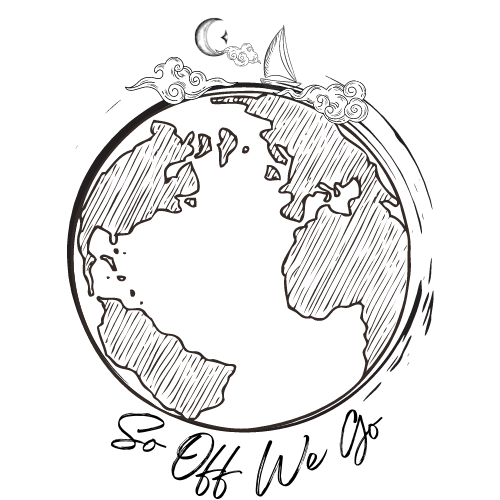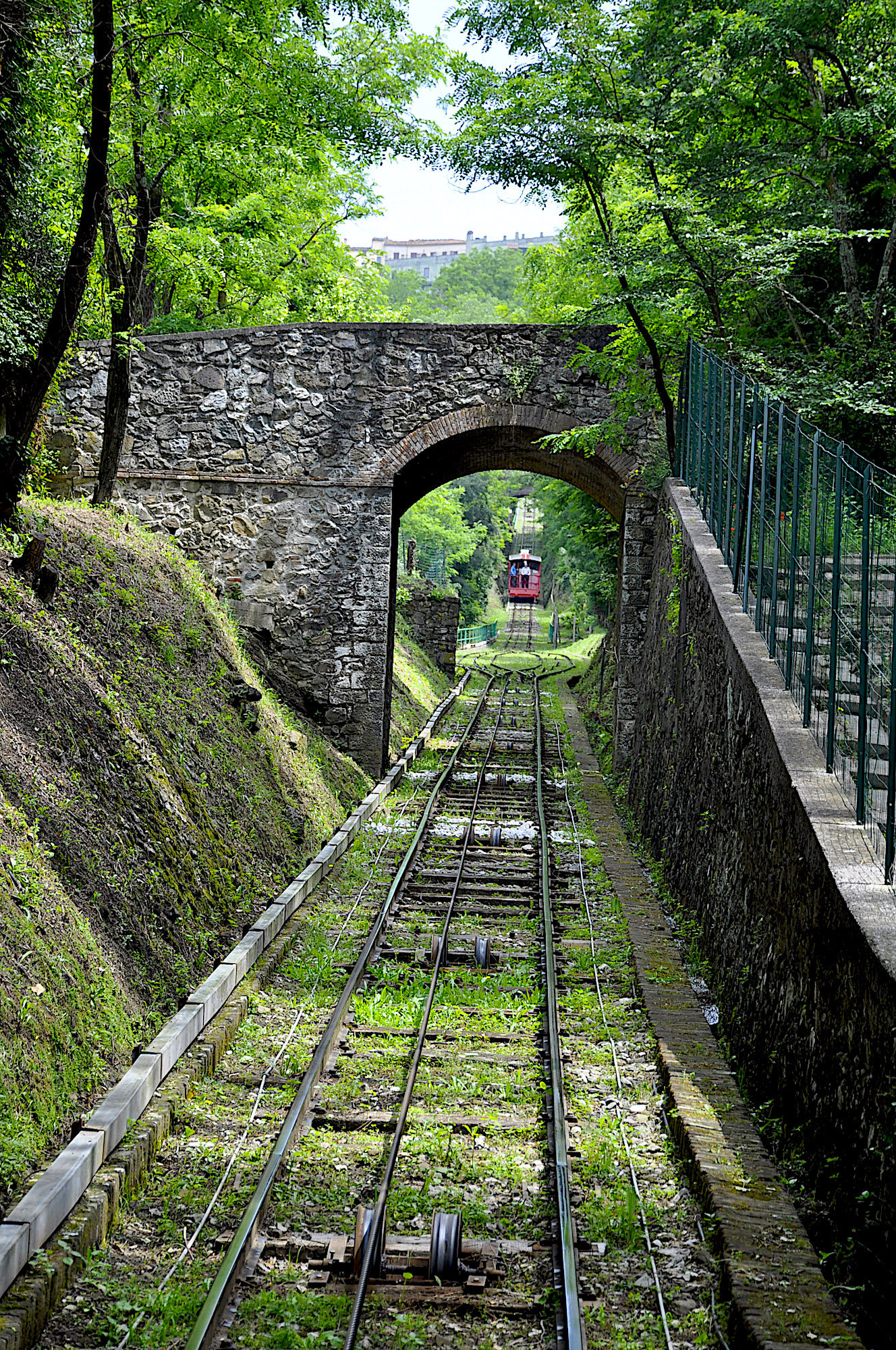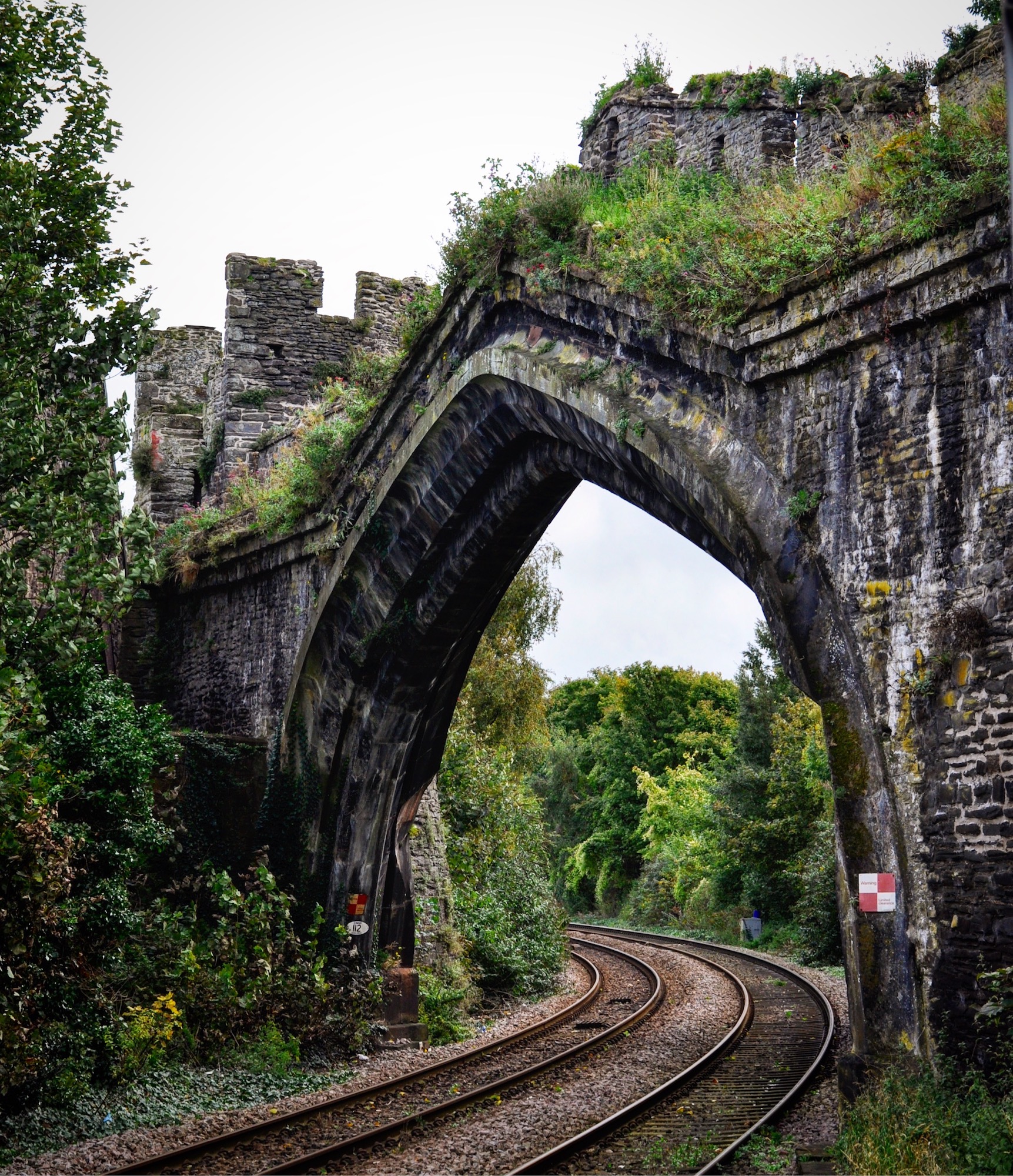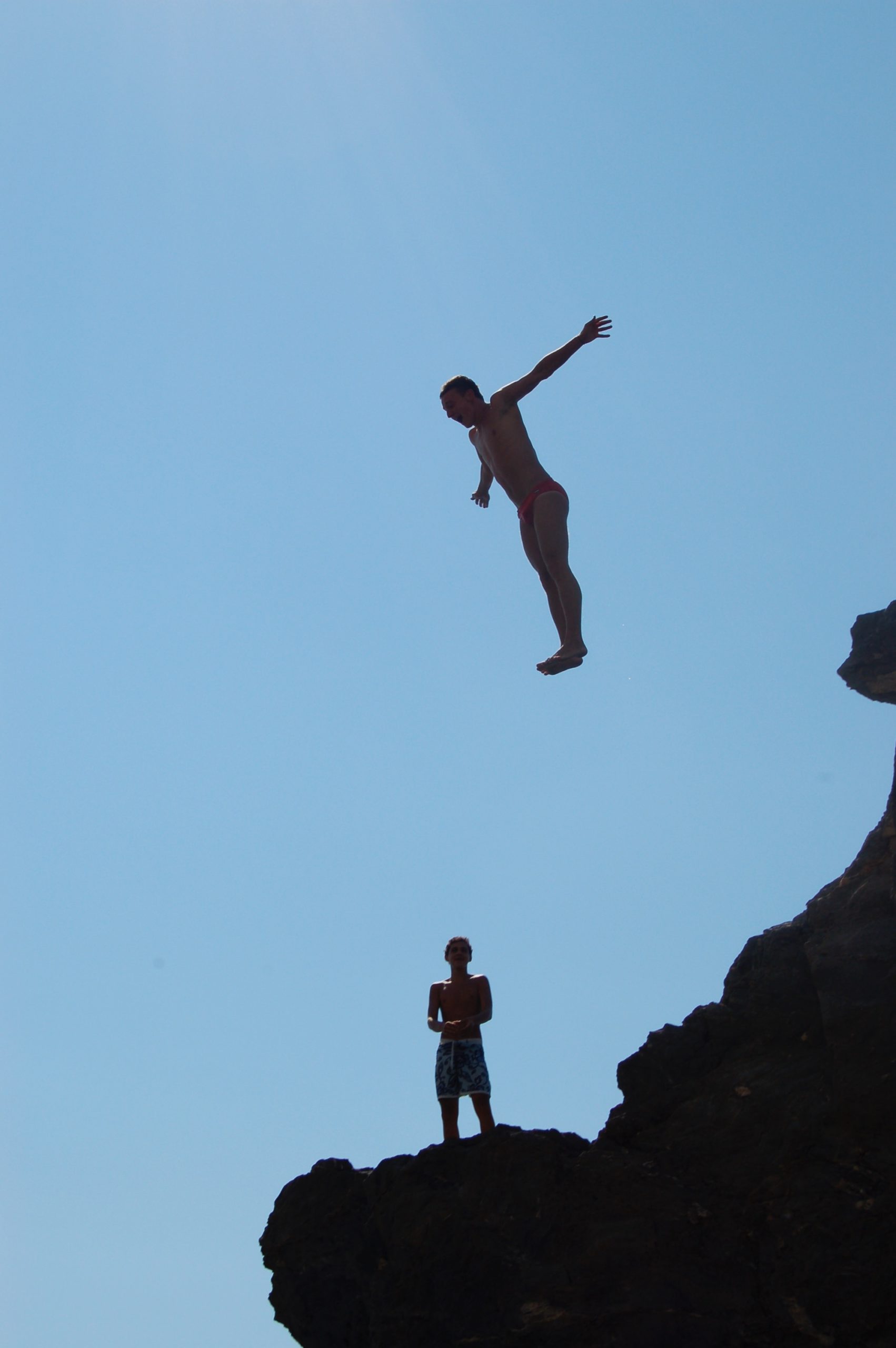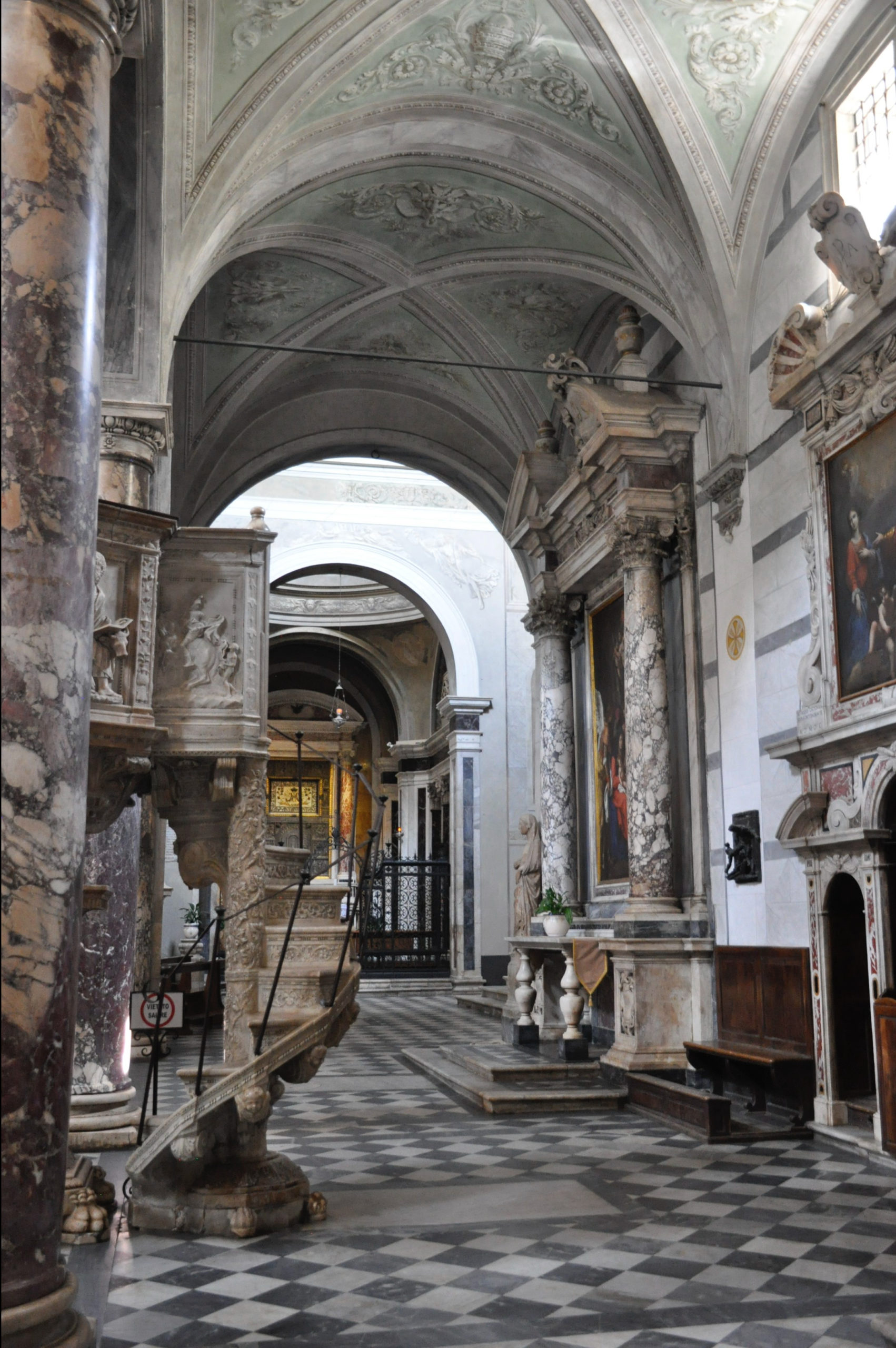Recently I traveled from Naples to Pompeii and then to Herculaneum and Rome in one day. It was a long day but absolutely worth it!
My experience:
- Getting to Herculaneum (Ercolano) from Naple or Pompeii by train
- What to see in Herculaneum
- What I enjoyed more about Herculaneum
- Details of the Trip
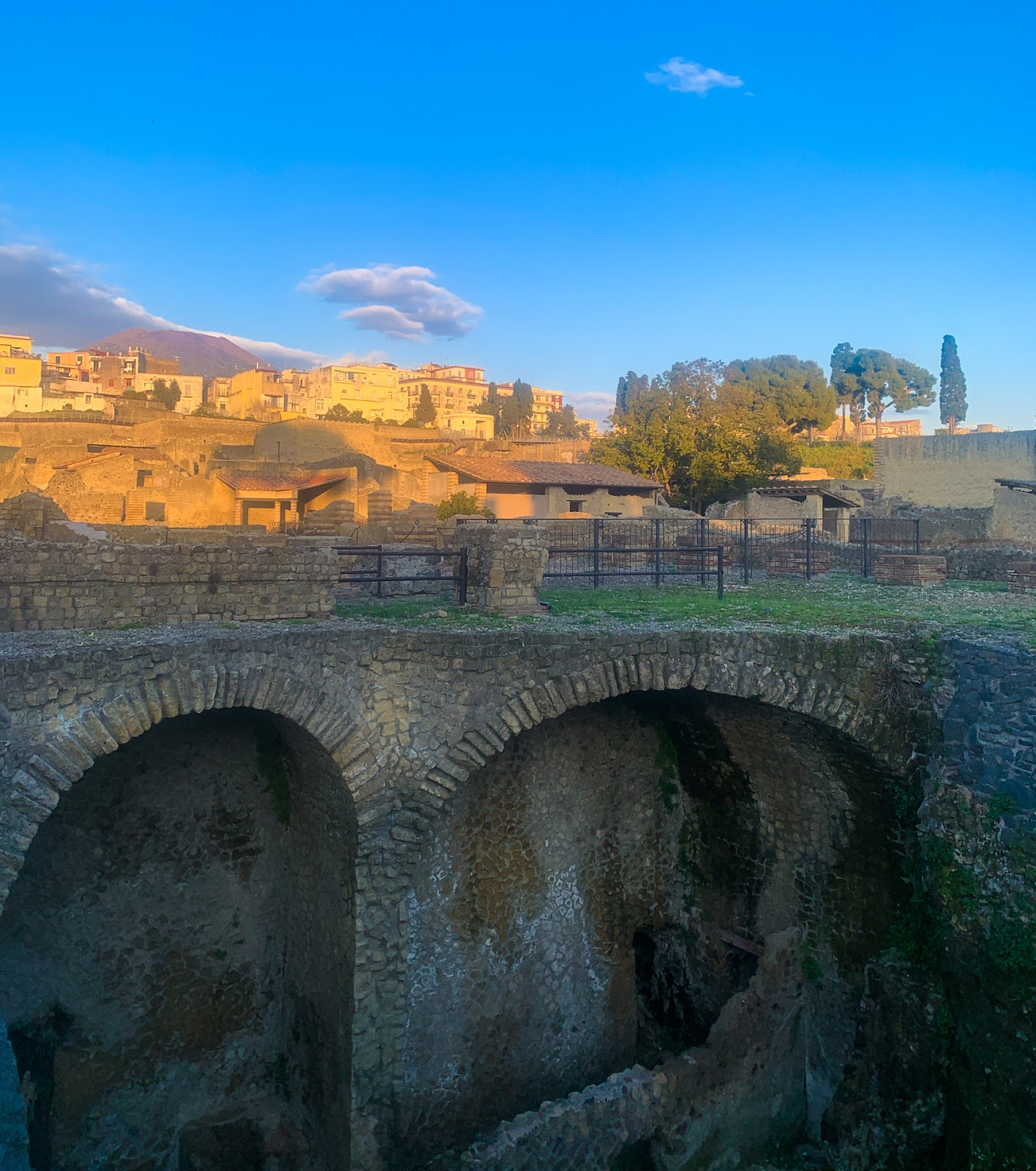
Getting to Herculaneum
Getting to Herculaneum from Naples is extremely simple. First you need to catch the Circumvesuviana trainfrom Napoli Centrale train station in Piazza Garibaldi. The station is Napoli Garibaldi located inside the Napoli Centrale station. Take this to Ercolano Savi Vesuvio. (The train destination is Sorrento.) This is the only stop for the Herculaneum ruins. It takes about 25 minutes to arrive in Ercolano.
The train is not as nice as the Trenitalia trains and can get quite crowded so you may want to arrive a little early at the Napoli Centrale station to be first in line for seats. The train runs every 30 minutes and the tickets cost about 4 euro.
I have seen many people talking about how crowded the train can be. We didn’t have this experience since we visited in March, but I think it is something to bear in mind. So at the end of the post I have suggested another train to take to Pompeii and Herculaneum.
To catch the train from Pompeii you take the same Circumvesuviana train line from the only train station in Pompeii. The journey takes about 20 minutes and costs around 3 euro.
Once you arrive in Ercolano Scavi leave the train station and walk straight down 4th November street (Via IV Novembre). The walk is about 5 minutes downhill. This street leads you directly to the entrance of Herculaneum.
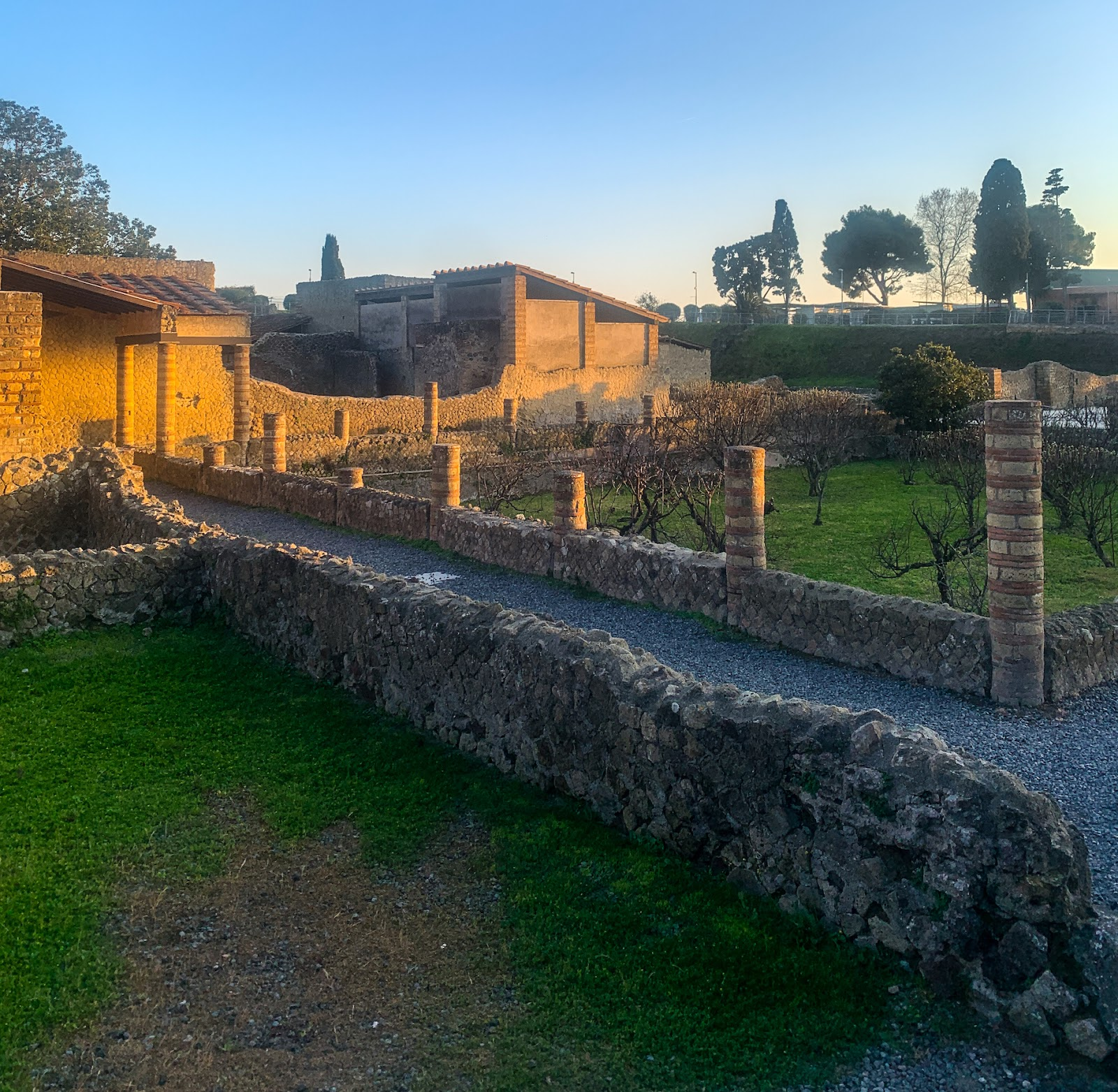
What to See in Herculaneum
Like Pompeii one can walk the streets of the town.There are homes and shops to walk through, and plenty to see from the roads. It is much smaller than Pompeii but also much better preserved. Herculaneum was destroyed by a 100mph, 250 degree celsius surge of hot ash and gas. Since it was ash instead of lava rock there are preserved pieces of furniture, wood beams and doors still in existence.
Before visiting Herculaneum we had not done any research so we had no idea what to expect. In many ways I think that was better. The impact of walking into the area was complete awe. Unlike Pompeii, you enter above the town so there is immediately a birds eye view of the town and the destruction. It is always quite interesting to see the contrast between the “new” town and the ruins of Herculaneum. I wondered many times during our visit what would happen if the Vesuvio were to erupt now.
Once we bought the tickets and started walking towards the point of entry to the ruins we were shocked to see the skeletons of the residents in the marina. Visiting Pompeii can feel like touring a museum. When we saw the skeletons we understood immediately this was going to be a much different experience. Herculaneum immediately felt more like a sacred place. It was much easier to comprehend the final moments of the residents and their everyday lives before the eruption.
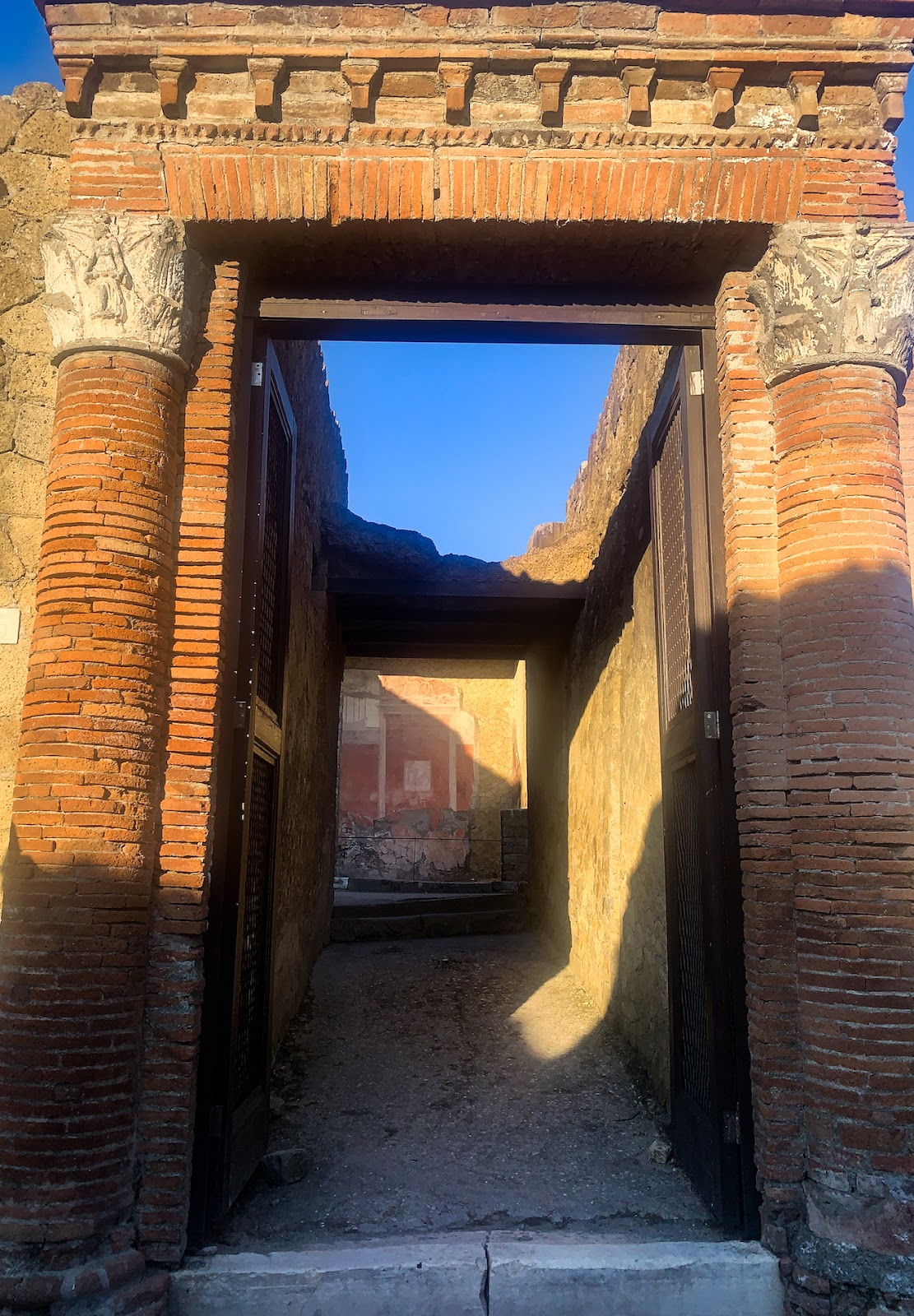
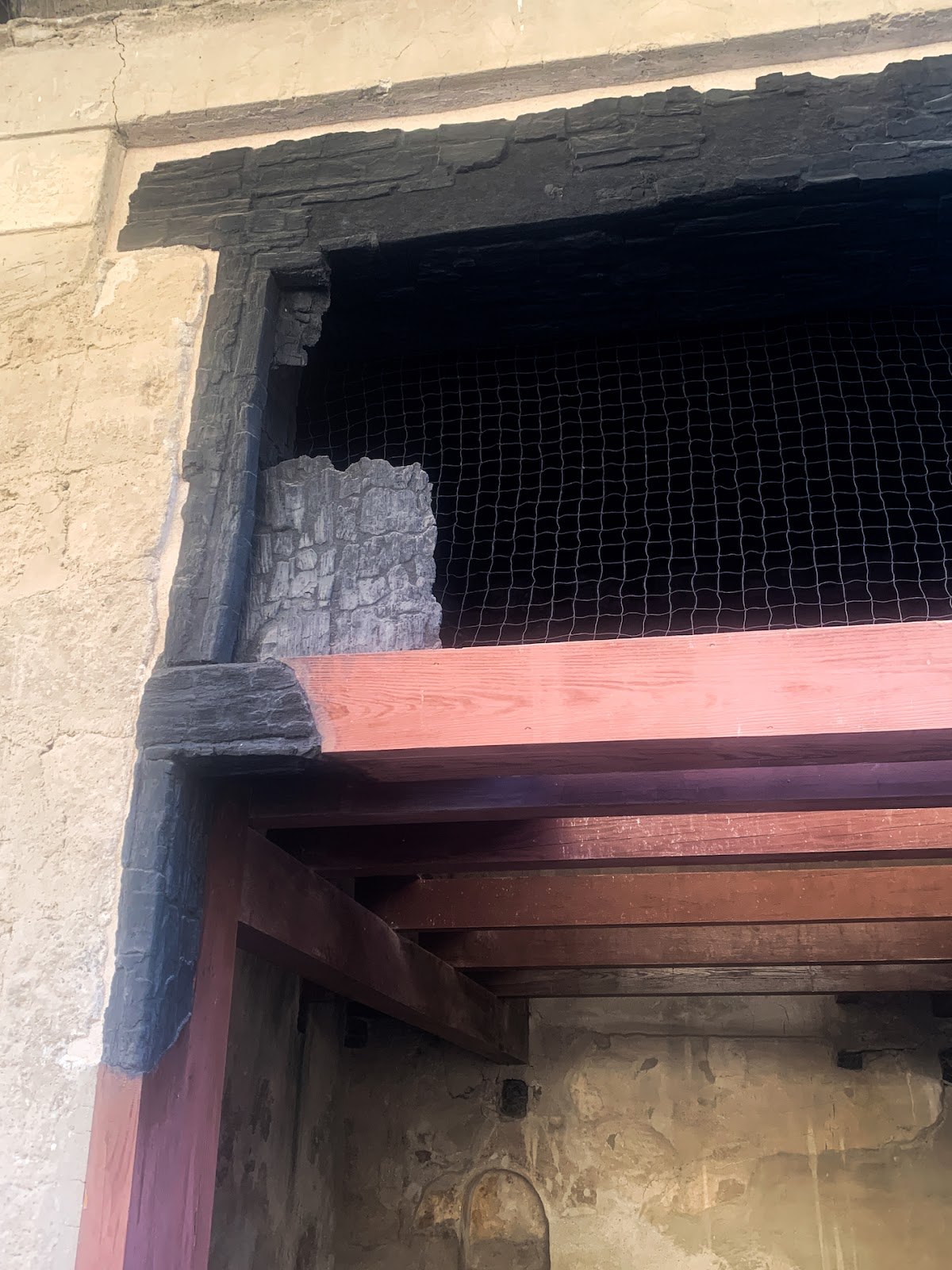
Understanding the way they lived was much easier in Herculaneum than Pompeii. I was completely fascinated by the doors, signage and furniture that gave a better picture of everyday life. Many of the frescoes were better preserved as well.
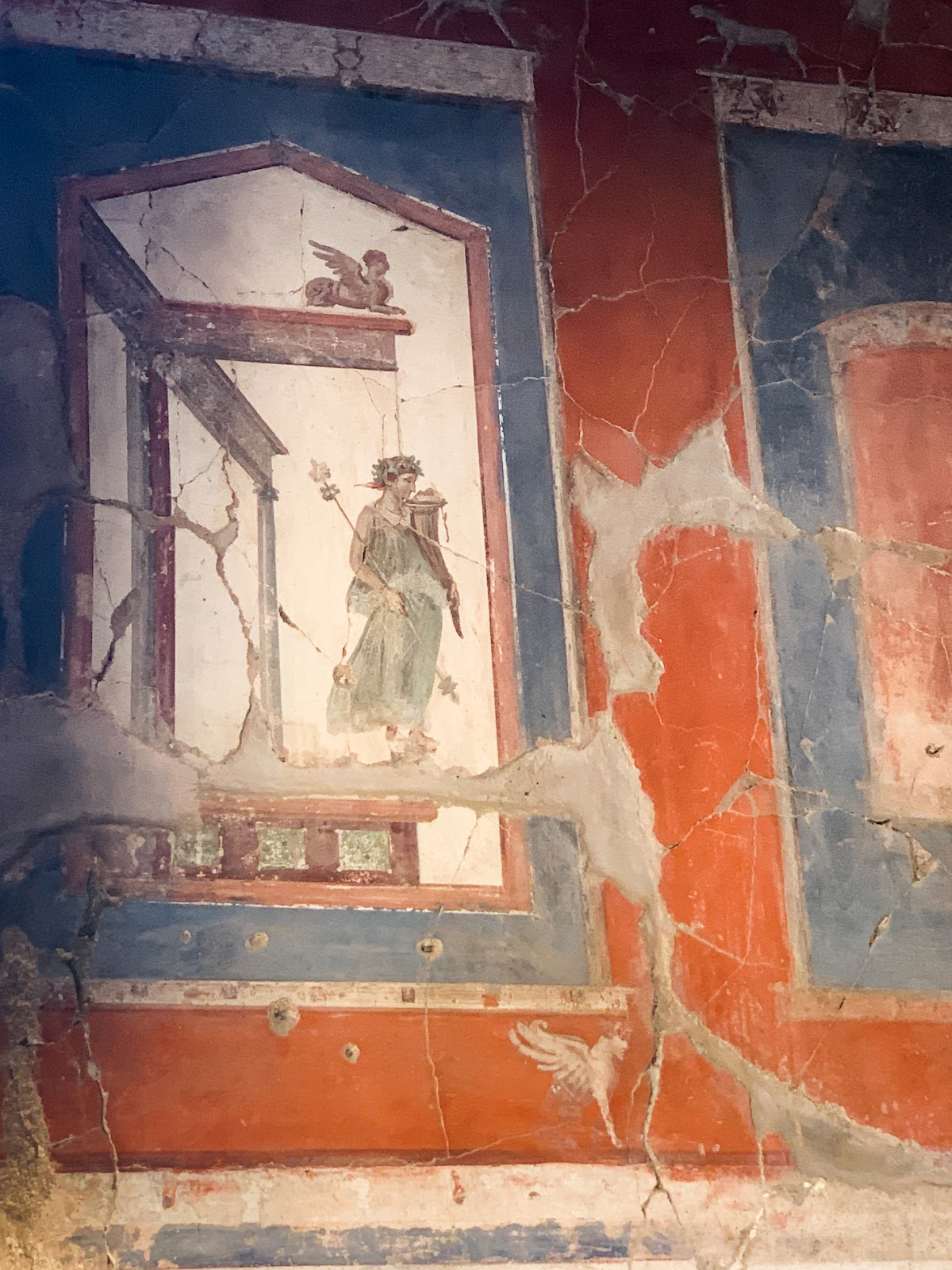
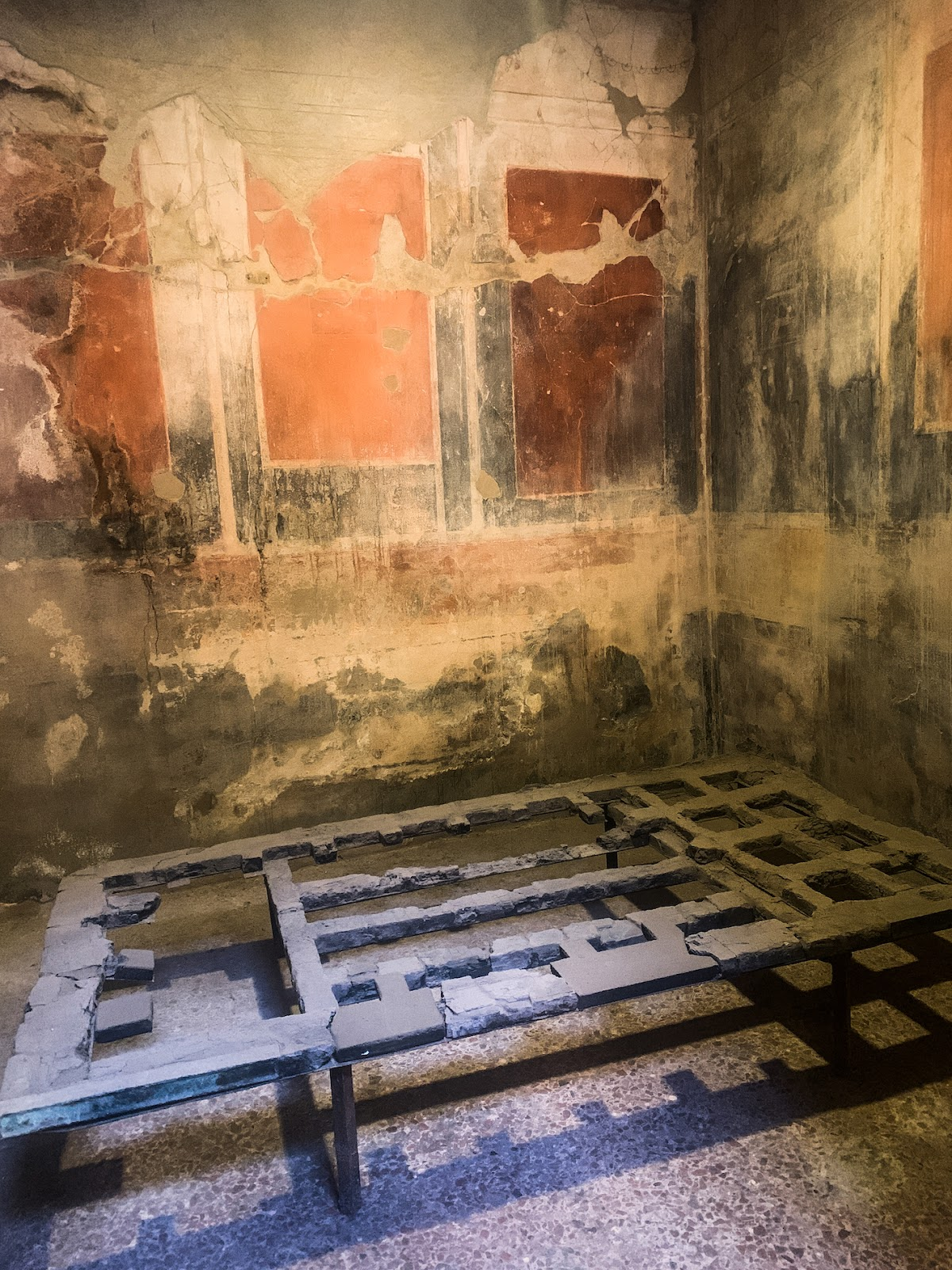
The highlights were:
- Thermal baths (Terme del Foro)- It is still possible to see the areas where clothes were left in the 1st century baths, the men’s section and the women’s section. There are beautiful dolphin patterns in the mosaic floors. Wandering through the baths it was easy to imagine how the residents must have spent their time in the thermal baths and the gym (palestra) nearby.
- The College of the Augustales (Collegio di Austales)- This is where free men attended classes who were devotees of the cult of Emperor Augustus. We loved seeing the college, located at the back of the village.
- The House of Wooden Partition (Casa del Tramezzo di Legno)- Here you can see the original doors still intact which were used to separate the atrium from the larger living room. The doors are not simple wooden doors, they are beautiful works of art. Built well enough to withstand the eruption, being buried for centuries and now being exposed to modern day life. The floors in the house are well preserved as well, so they offer a glimpse of what it would have been like to live in Herculaneum at the time.
- House of the Deer (Casa dei Cervi)-This has a beautiful courtyard with statues of deer, and a layered garden area.
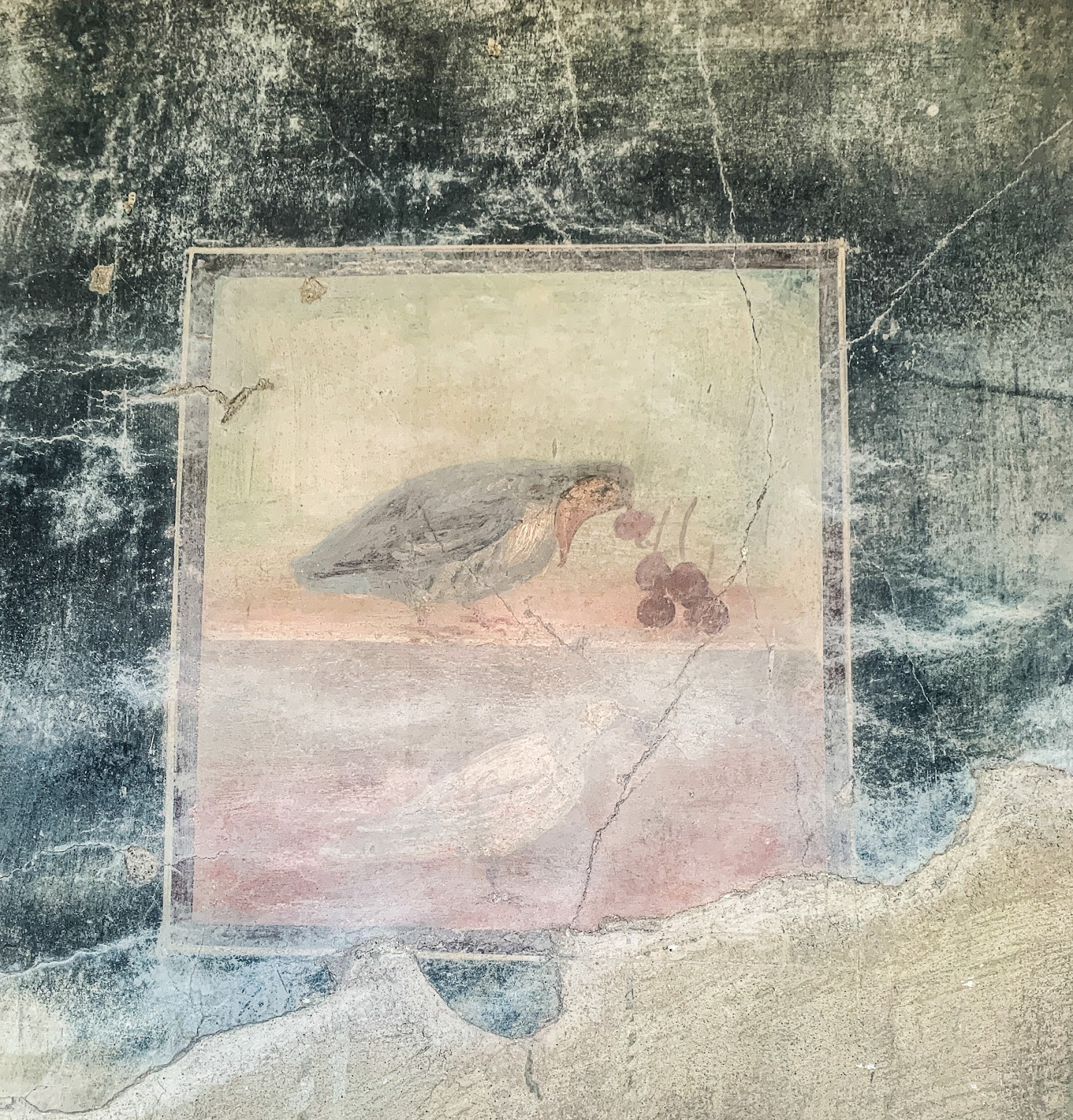
- House of the Relief of Telephus (Casa del Rilievo di Telefo). A grand house overlooking the marina, built between 27 BC and 14 AD. This house is so special. It is covered in frescoes, unlike we have seen before. The pillared corridors lead to a garden and then a terrace which overlooks the marina. The architecture is still stunning after all of the destruction and time. The pillars are still in excellent condition. The house is a two story house, and while it is not possible to tour the second floor you can still look up and see the architecture. There are also amazing black and white frescoes in some of the individual rooms. Amazing!
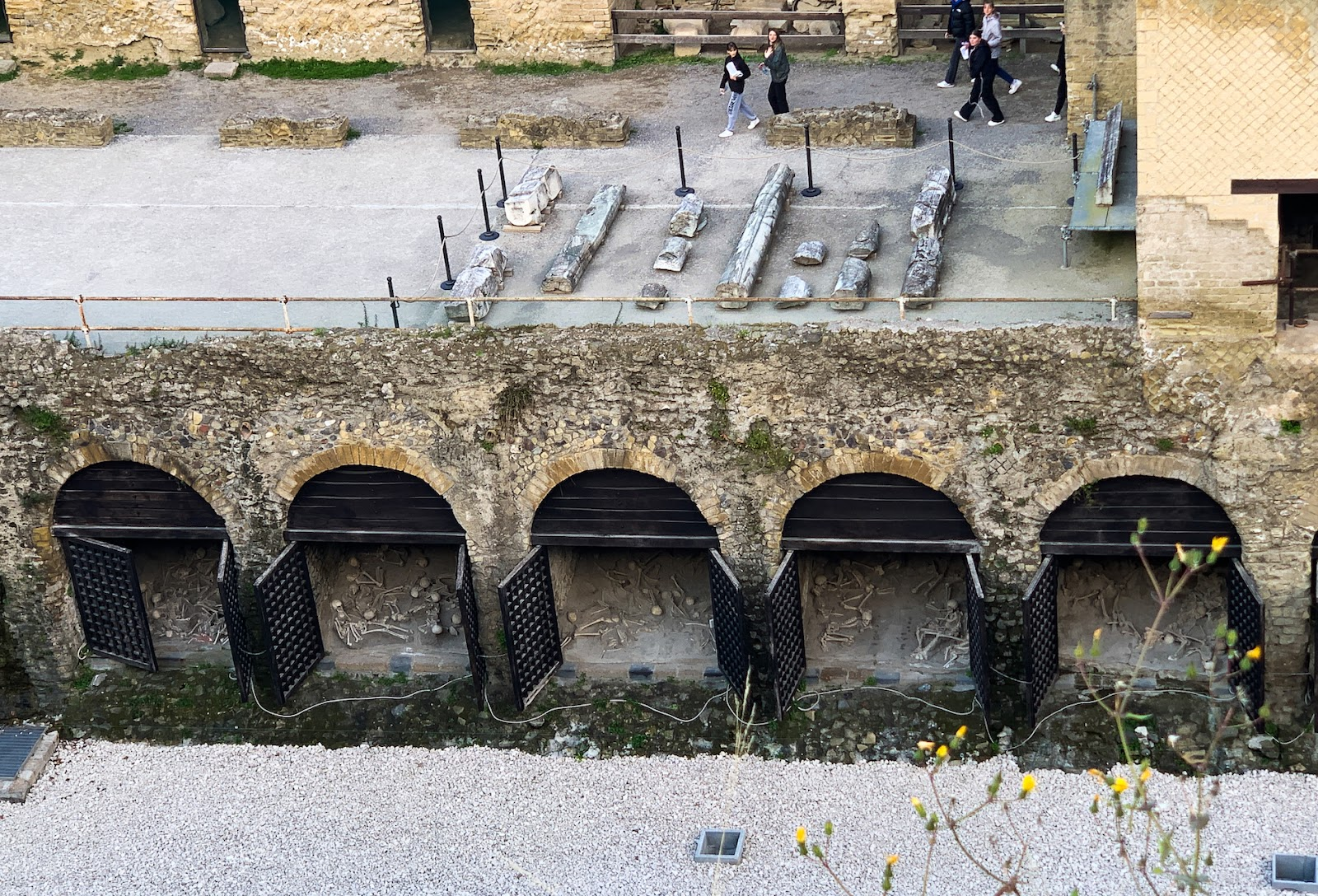
- The Boathouses (Fornici)-The location where about 340 skeletons remain of people trying to escape or hide. When the skeletons were uncovered they found a woman who was 8 months pregnant, people clutching their jewelry and money along with other precious belongings. It is unclear if these people rushed to the marina hoping to escape by boat or if they were hiding in the boathouses hoping to survive. The mass graves make the event so real and sacred. Above the area is the chapel of the gods, a tribute to the very deities who the residents had believed were protecting them.
- House of Neptune and Amphitrite (Casa di Nettuno e Anfritite)- The home of an art collector who chose to remain at his dining table honoring what he loved most about life. We were so moved by this home. It is absolutely stunning, but more importantly the choice the owner made to stay in the place he loved so much. Imagine him sitting there looking at his beautiful art as his world came to an end. His last moments must have been filled with peace rather than panic. There is a lot to consider when you imagine the difference between the two choices.
- Samnite House (Casa Sannitica)-Full of colorful and masterful frescoes in most of the rooms this house must be seen to grasp the beauty the Herculaneum people lived in before the eruption.
- House of the Mosaic Atrium (Casa dell’Atrio a Mosaico)- Amazing mosaics remain on the uneven floor of this house that shouldn’t be missed. It offers a better understanding of the craftsmanship the locals had and the importance of their homes to be grand and beautiful.
- The museums (I Musei)- One of the museums is full of jewelry, cookware and other items. Herculaneum was a wealthy town. Therefore, the jewelry and household items are exceptional examples of what the residents were able to craft and obtain. The other museum contains a boat they found in the marina. The boat is incredibly well preserved. Alongside the boat is the story of how the archaeologists were able to preserve it. My favorite part of this museum was the very thorough and inspiring history of the event and the excavations that took place in Herculaneum.
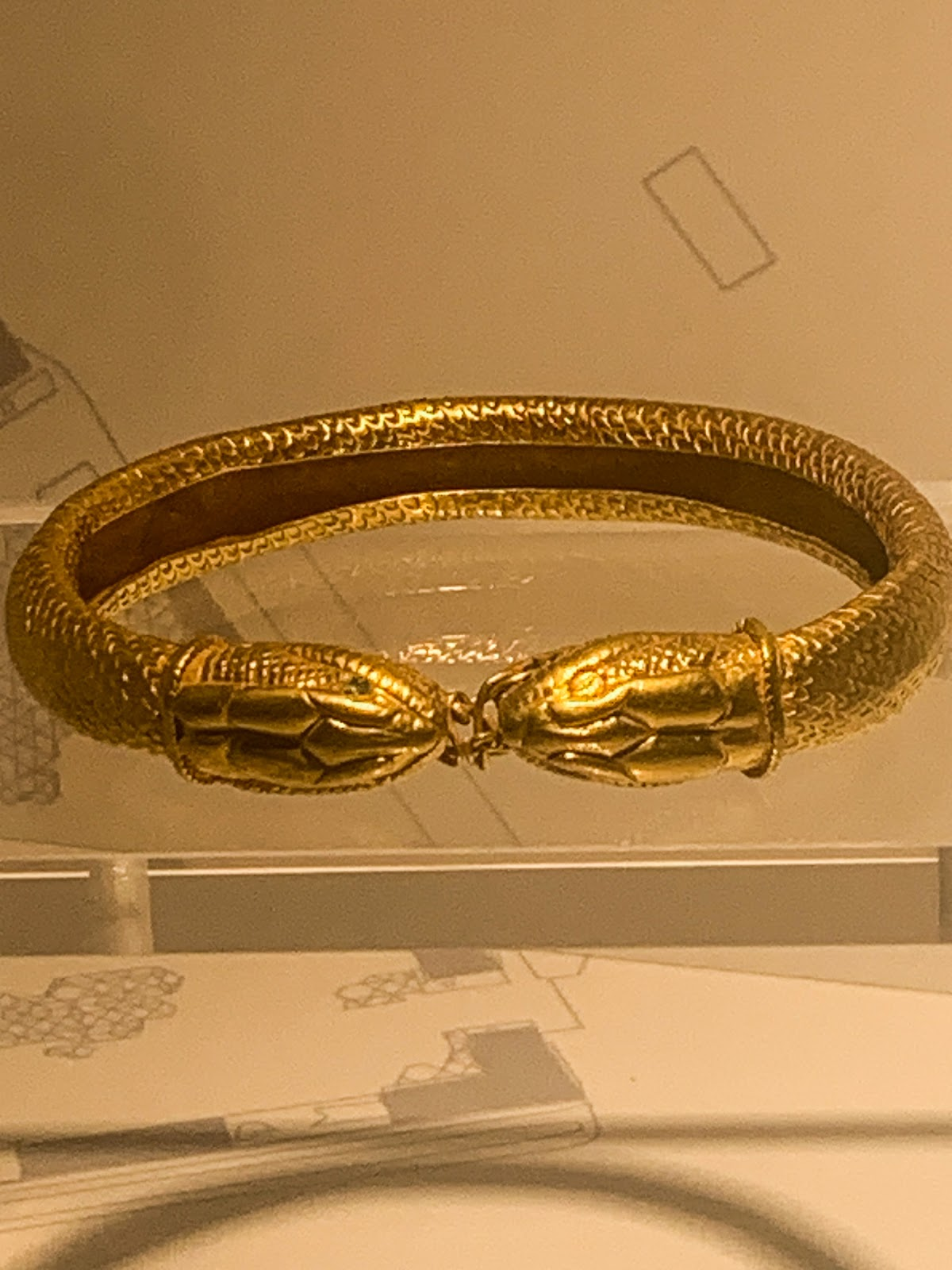
What I Enjoyed Most About Herculaneum
Seeing the skeletons in the Fornici was the most moving thing I saw all day. Immediately it was so apparent the fear, the impact of the eruption and the complete misunderstanding the residents had about what was happening. They had lived with the belief that the gods were protecting them from the volcano. When it was apparent that something terrible was happening I imagine they never thought it was as horrible of an event as it was. Many of the skeletons were found with jewelry, money and other possessions with them. They thought there was a chance of survival.
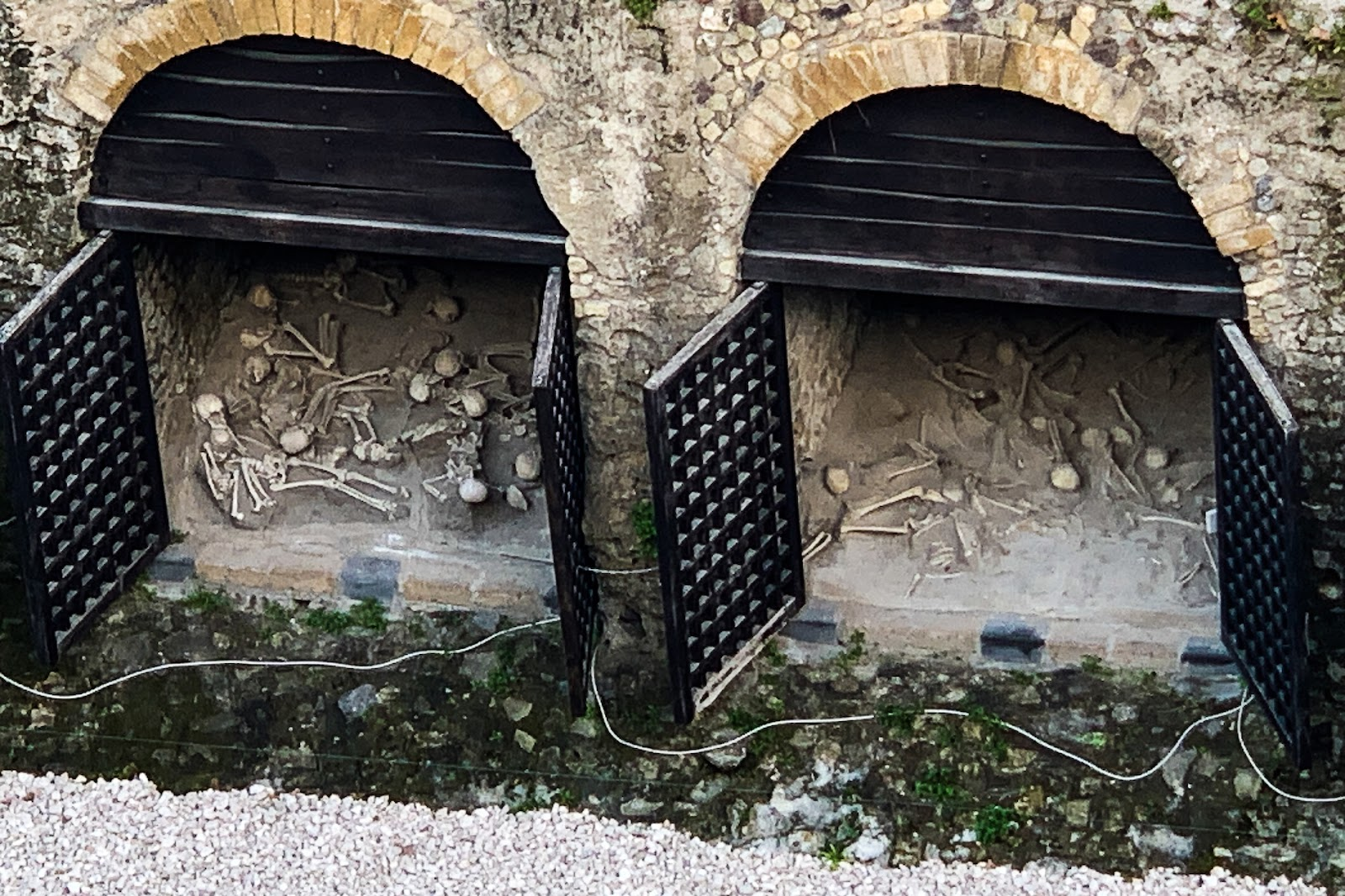
Seeing the boat in the museum and reading the story of the events surrounding the eruption and the aftermath was incredible for me. It made my experience more intimate than the one I had in Pompeii. After reading the stories I left with a sense that the excavations at Herculaneum were a more intimate experience than those at Pompeii. Perhaps this is only my feeling or perhaps it is true due to the size differences between the two locations. For all of Pompeii’s grandeur, statuary, theaters and massivity Herculaneum offers more preservation and intimacy.
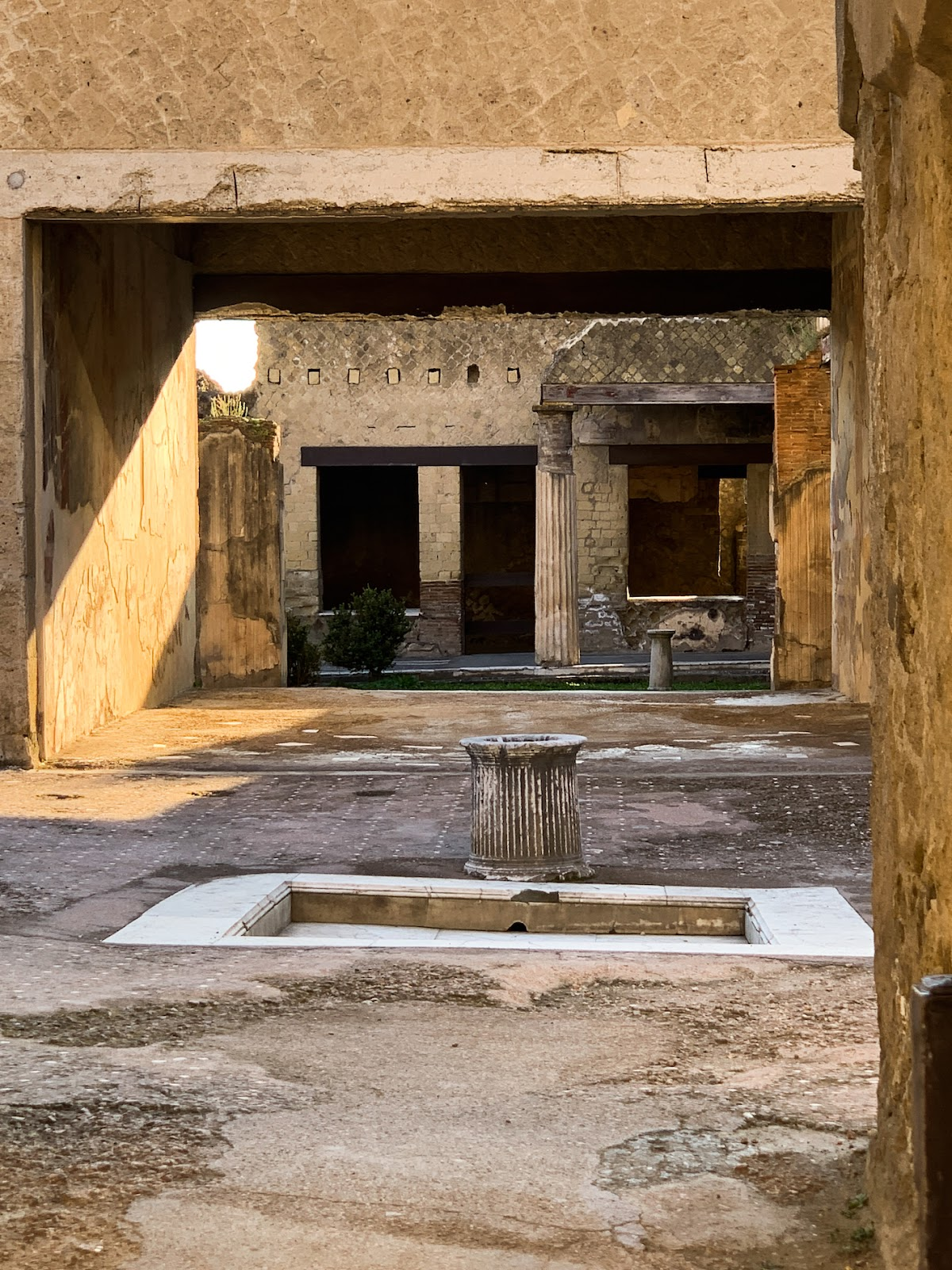
Since Herculaneum is not as popular as Pompeii I really enjoyed the absence of the crowds and the huge tour groups. Also on our walk to Herculaneum from the train station there were not numerous tourist stands selling souvenirs-the town of Ercolano is still a functioning town with local restaurants, bars and cafes. The walk from the train station in Pompeii to the entrance is at most 5 minutes but it is lined with people selling souvenirs, pizza, fresh orange juice and water. In Ercolano it is locals going about their daily lives, which function around the incredible ruins.
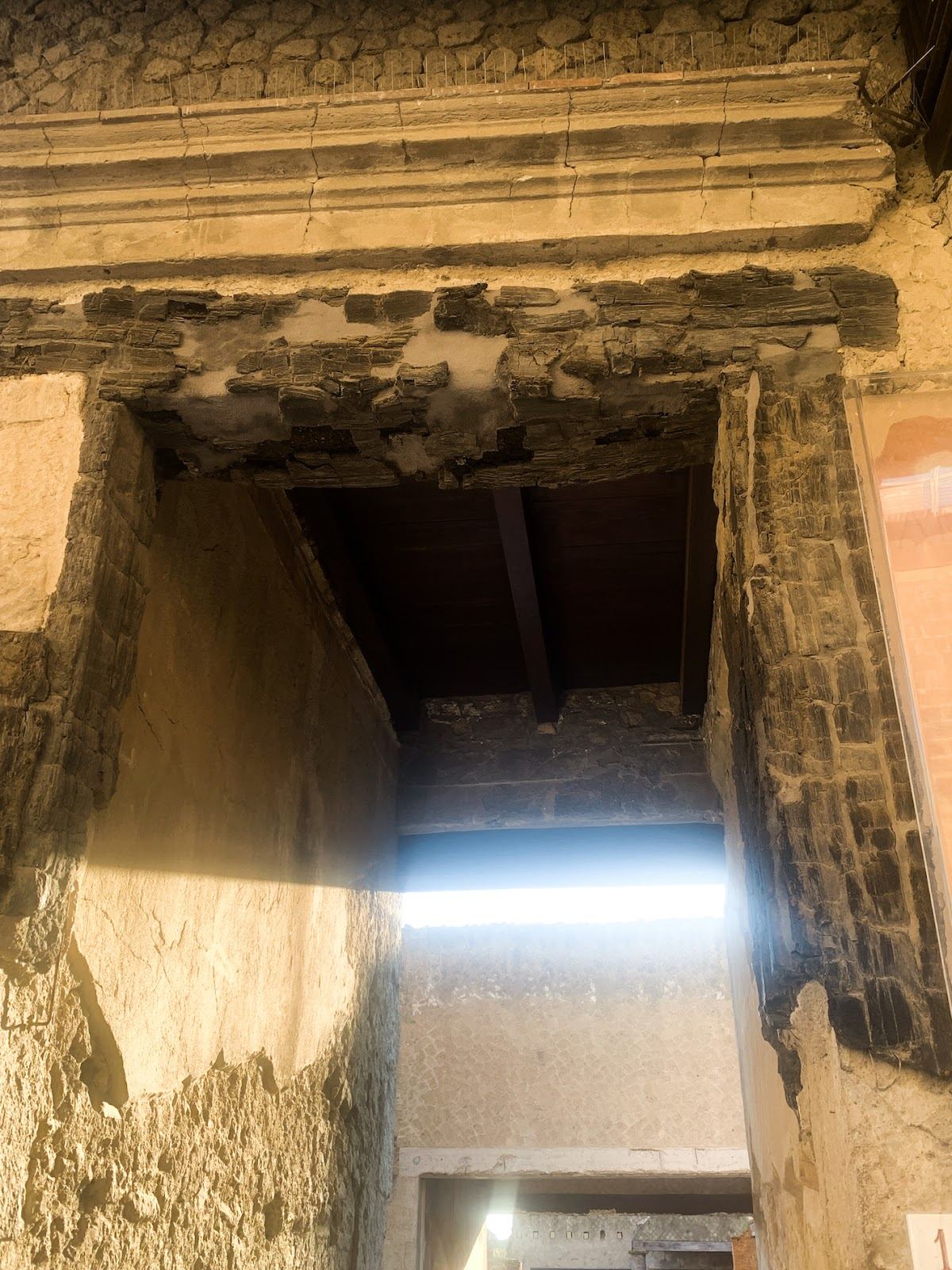
Details of the Trip
We traveled from Napoli Centrale station to Pompeii. We were in Pompeii from about 10:30 until 3:30. Then from there we caught the Circumvesuviana train from Pompeii to Ercolano. The station there can be quite busy and there is only one ticket window so I would recommend buying them online before or buying them at the Napoli Centrale station. Arriving in Ercolano around 4:00 was perfect. There were very few people there and we had several hours to wander Herculaneum almost completely alone. Herculaneum only takes about 3 hours to see in its entirety, in my opinion.
After we finished at Herculaneum we took the Circumvesuviana train from Ercolano to Napoli Centrale station. From there we caught the high speed train to Roma Termini station. This journey took about an hour and ten minutes. We arrived at our Airbnb by 8:30 and were at the Trevi Fountain for dinner by 9:30.
It was definitely a long day but we felt like we had seen everything we wanted to see. My advice would be if you are planning a day like this, plan what you want to see in Pompeii before you go so you can use your time wisely.
Also, we had our carry-on luggage with us the whole day. In Pompeii they offer small lockers where you can leave a backpack free. They also have a luggage room where you can check your bag. However, space is limited so if it is a busy travel day, or you arrive later it might be best to check your bag at the station.
Checking your luggage is possible at a depot in the train station (they charge about 8 euro per bag).
Herculaneum has a luggage check in the ticket office. There you can leave your luggage for free (at least it was free when we were there).
If you are traveling between April and October (we were not) you can also take the Campania Express train to Ercolano (Herculaneum) where there is air conditioning, guaranteed seats if you buy your tickets early, and faster arrival times. Since these are higher travel times I would recommend traveling with the Campania express instead of the Circumvesuviana. It is more expensive, about 15-25 euro per person) but much more convenient in high season.
When riding Italian trains always make sure to validate your ticket if you have a paper ticket. The fines can be quite high if you do not.
To learn more about sites in Italy, traveling around Europe or the world make sure to follow my blog.
